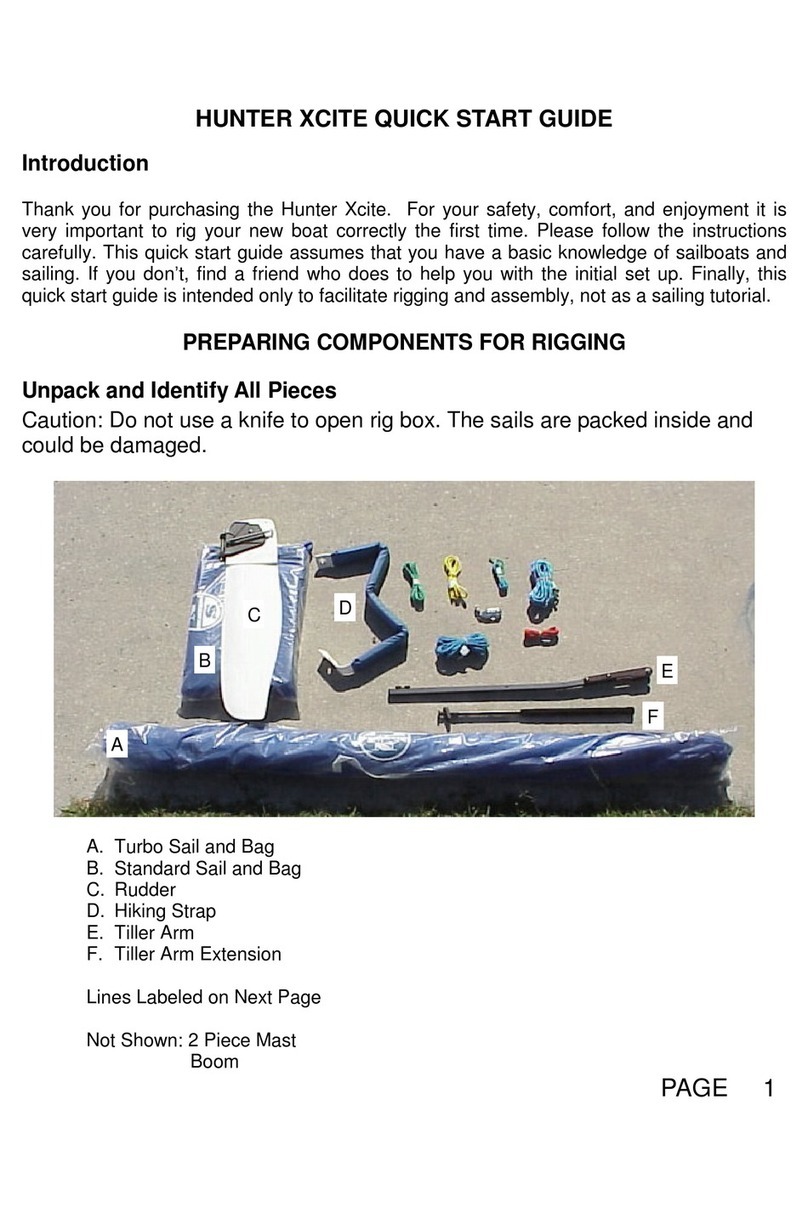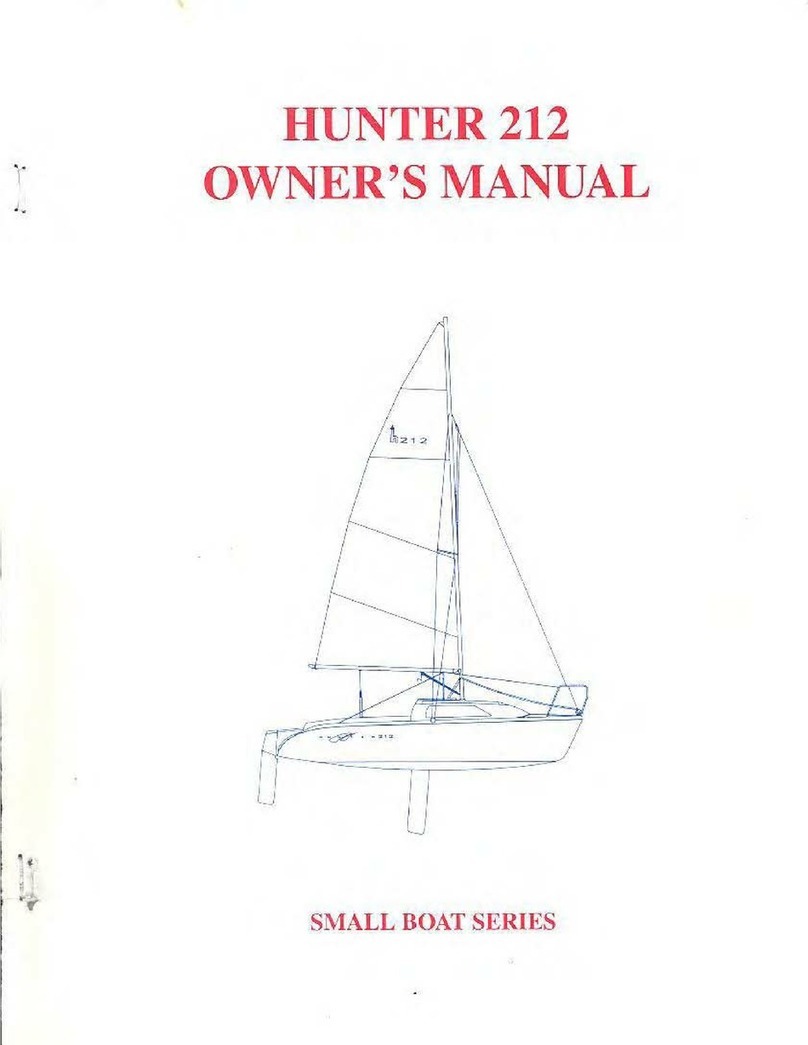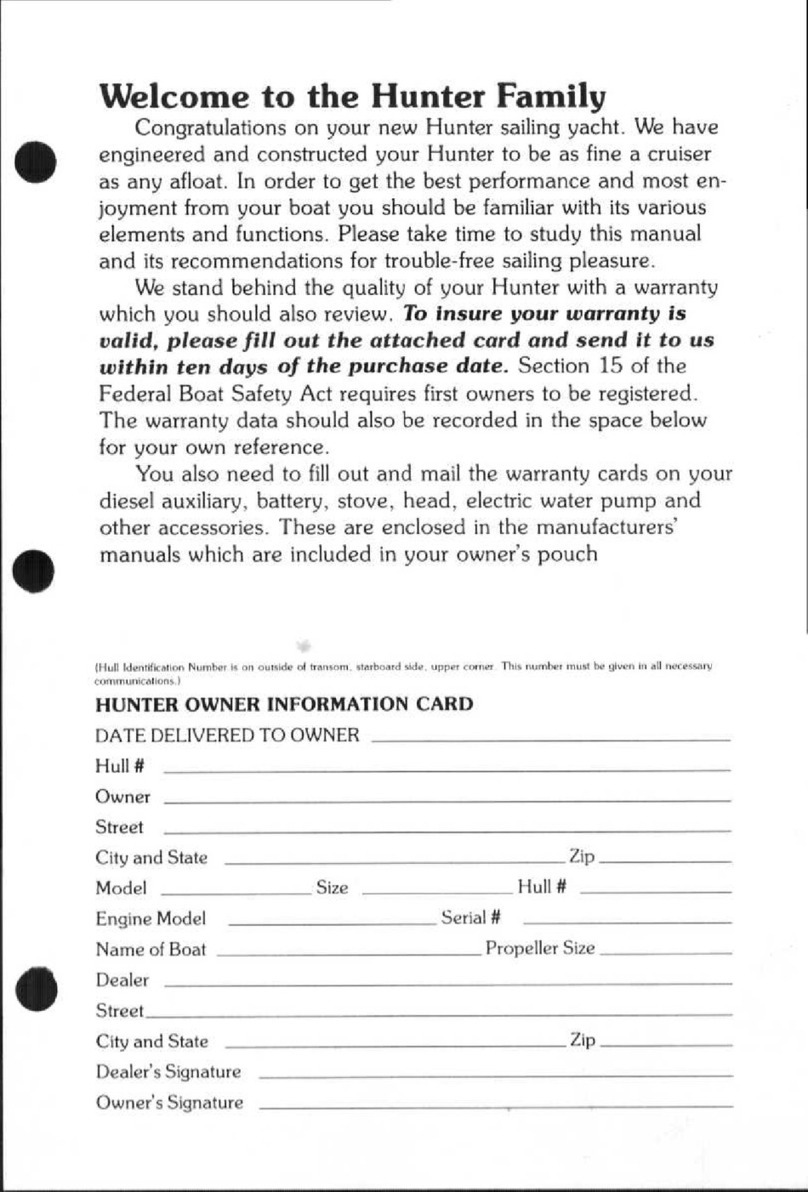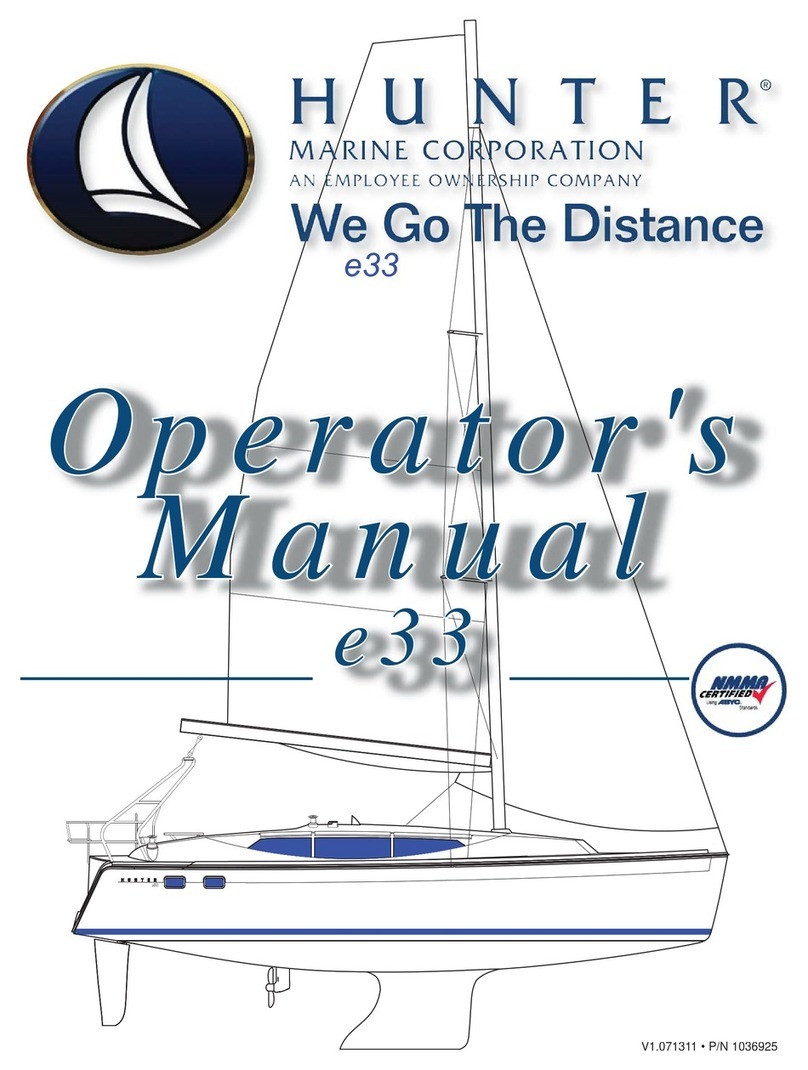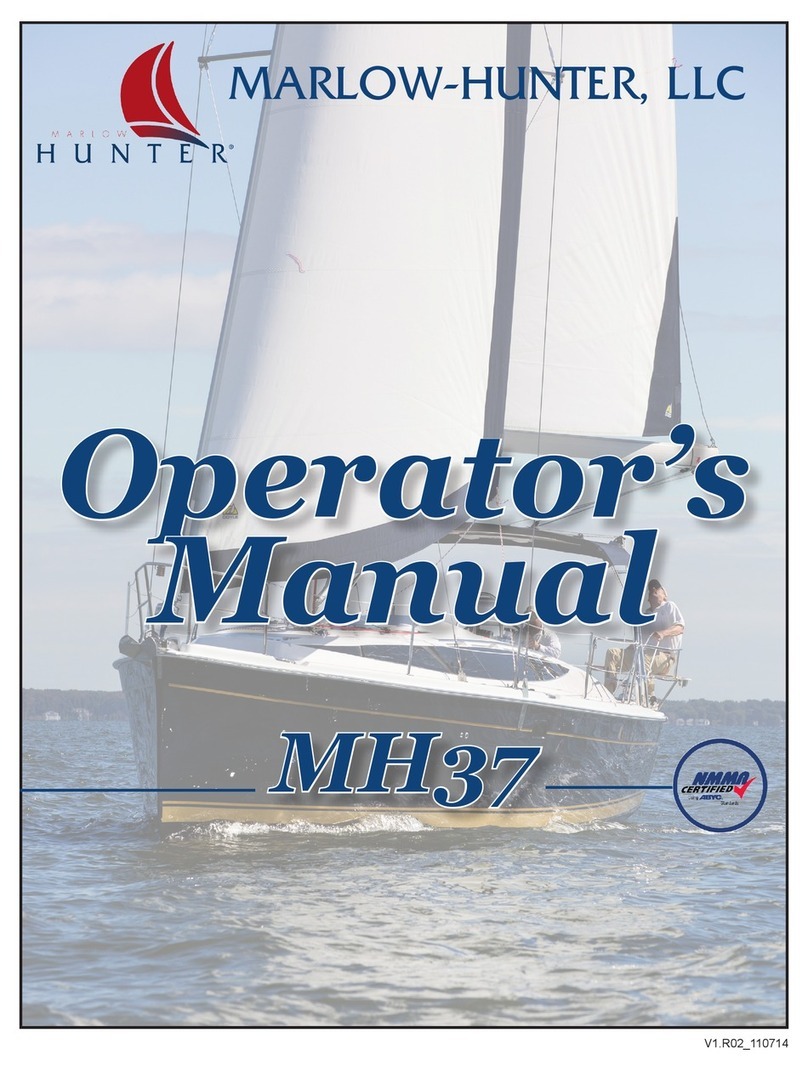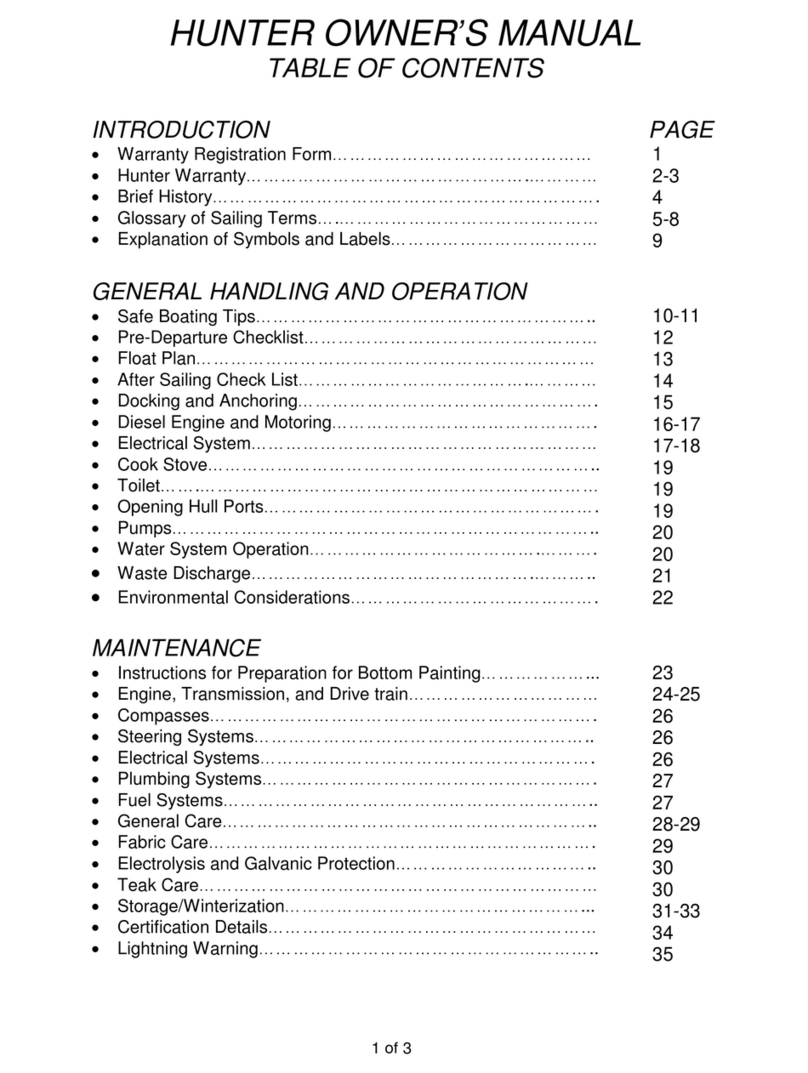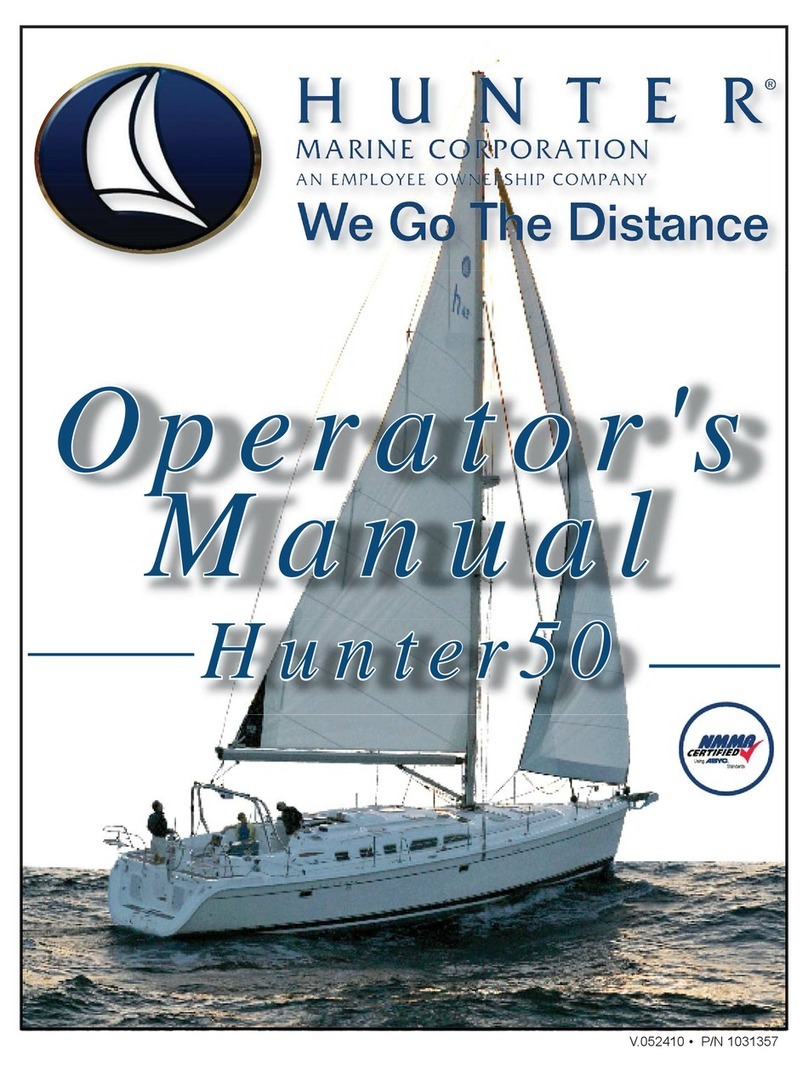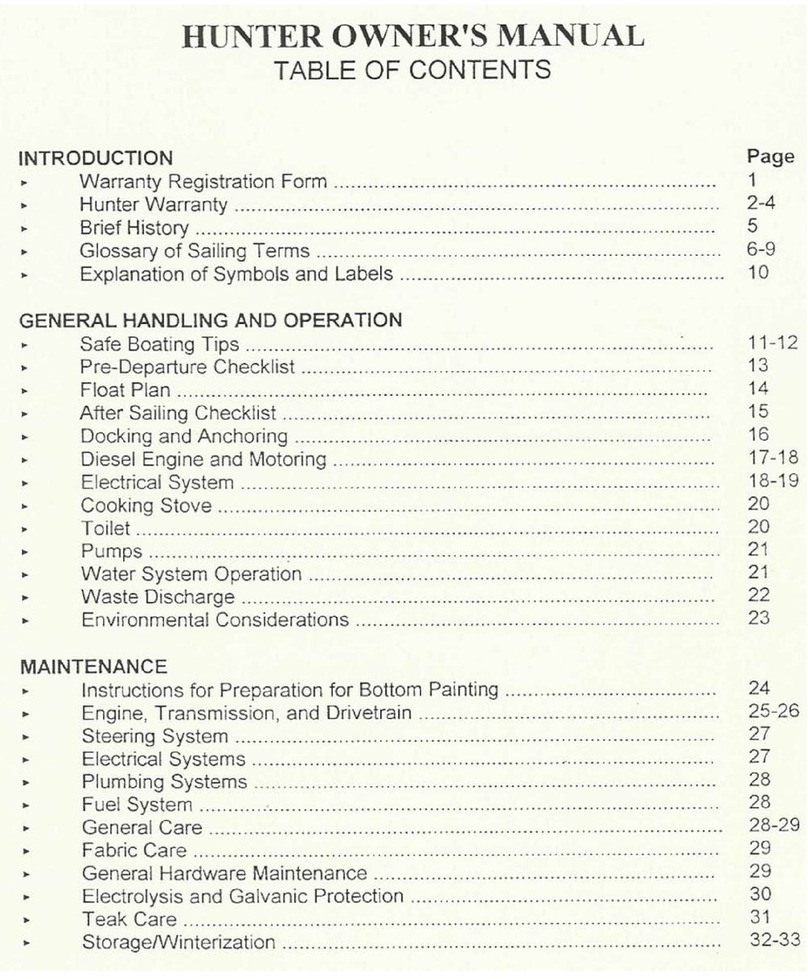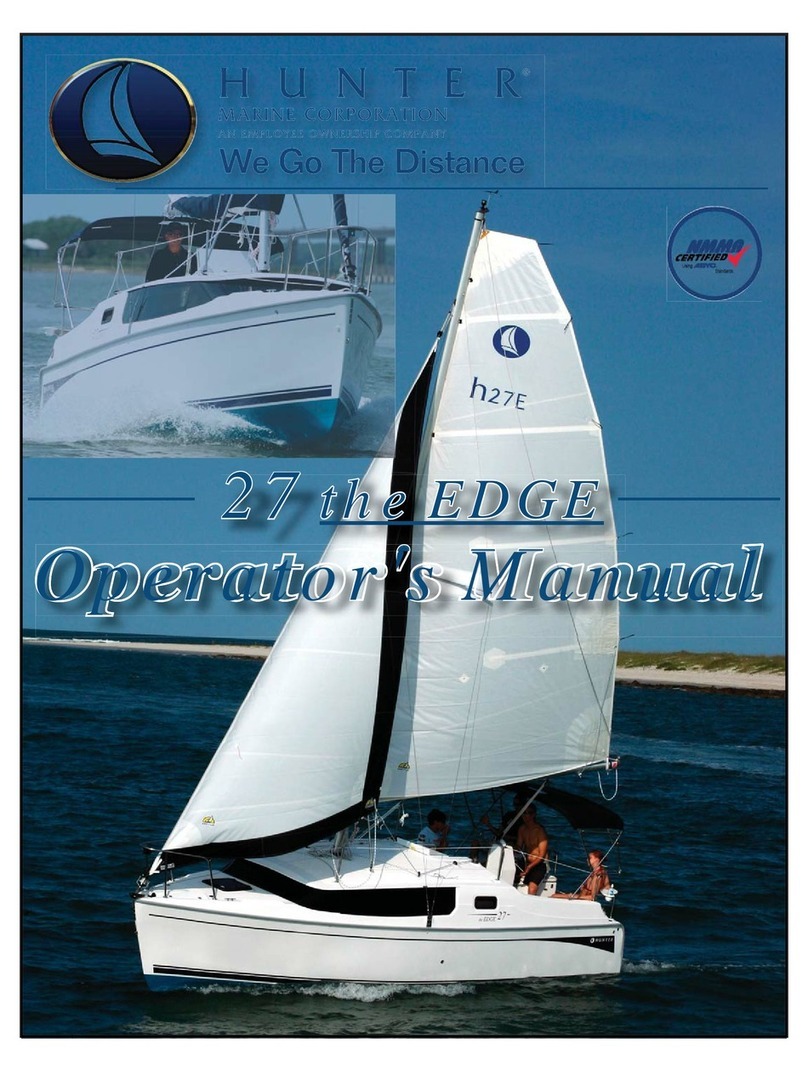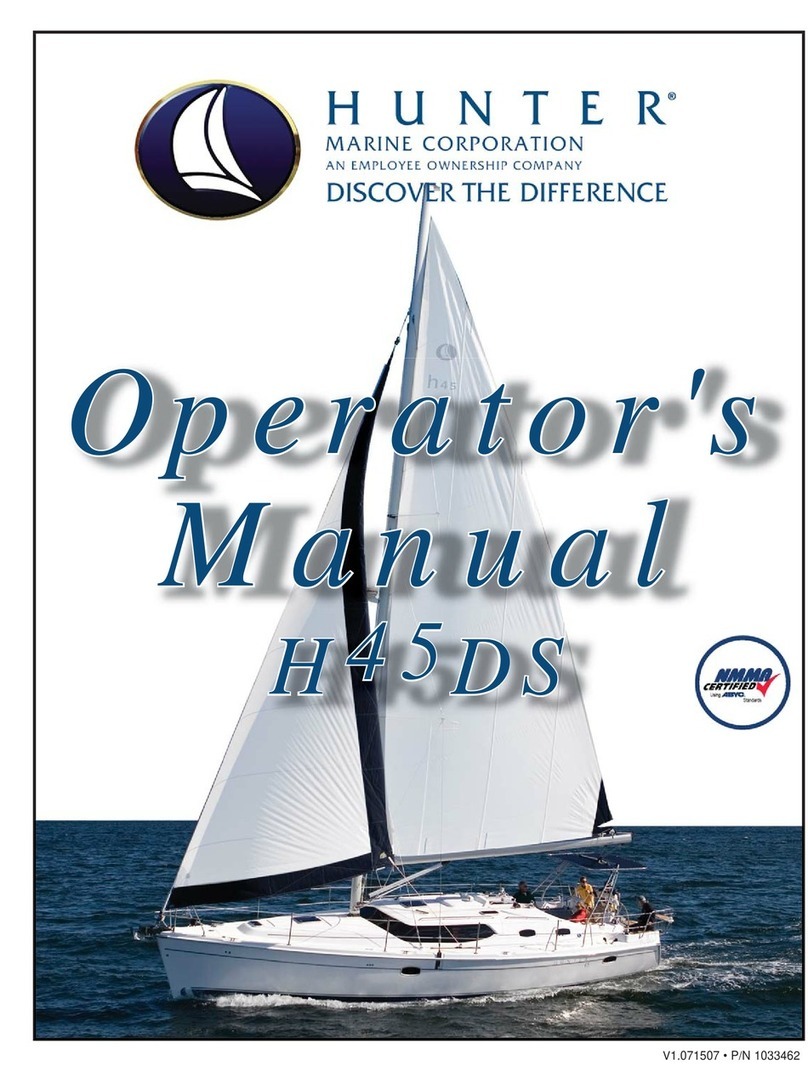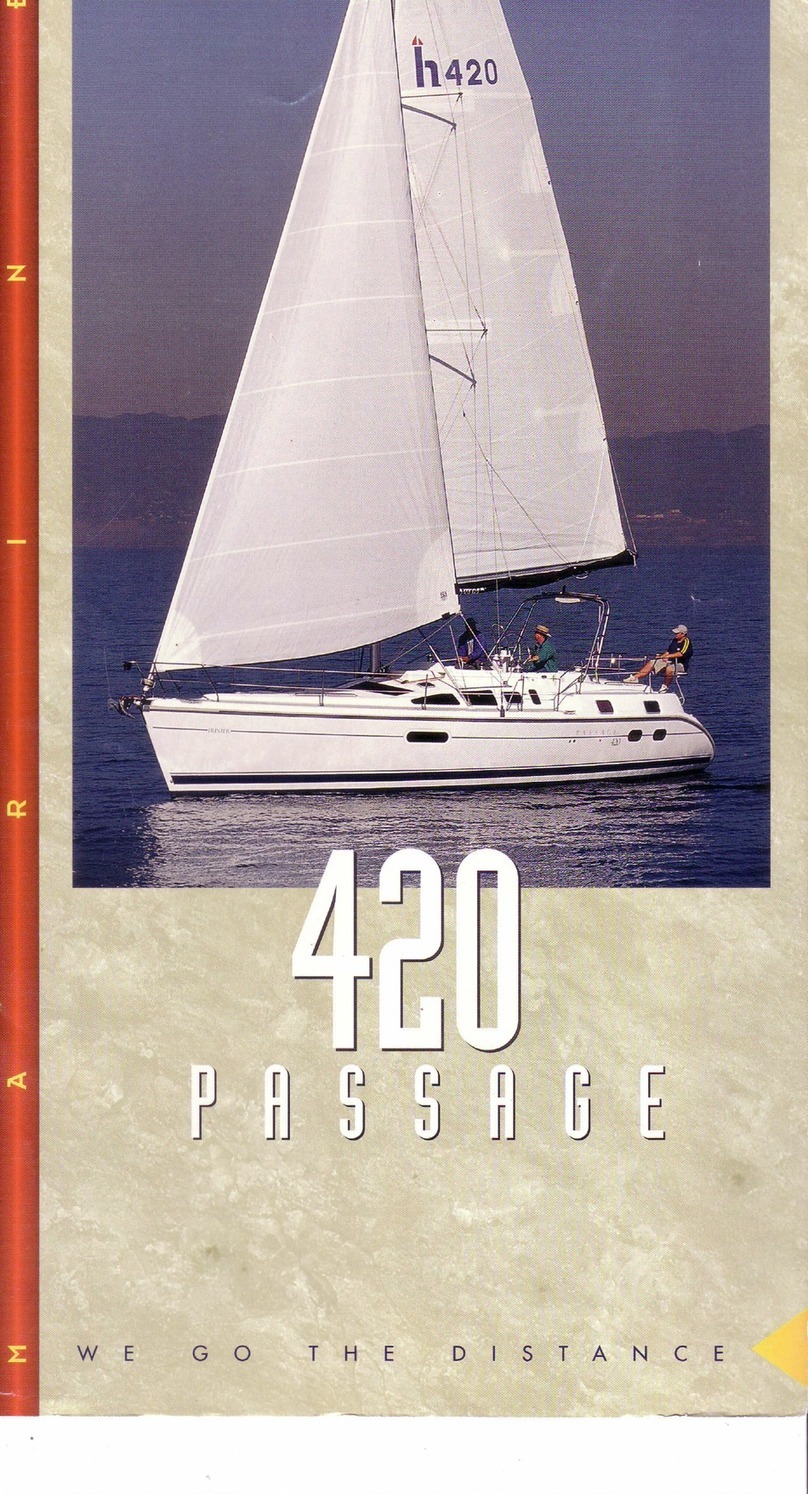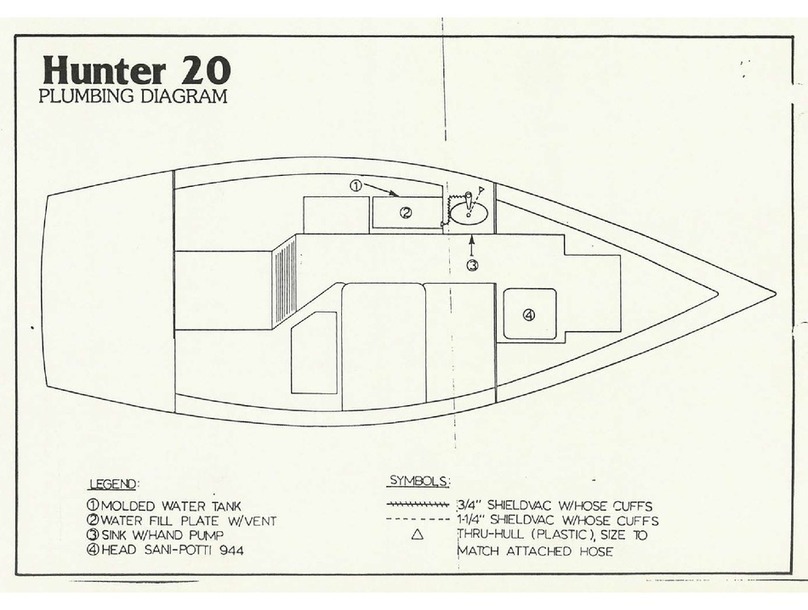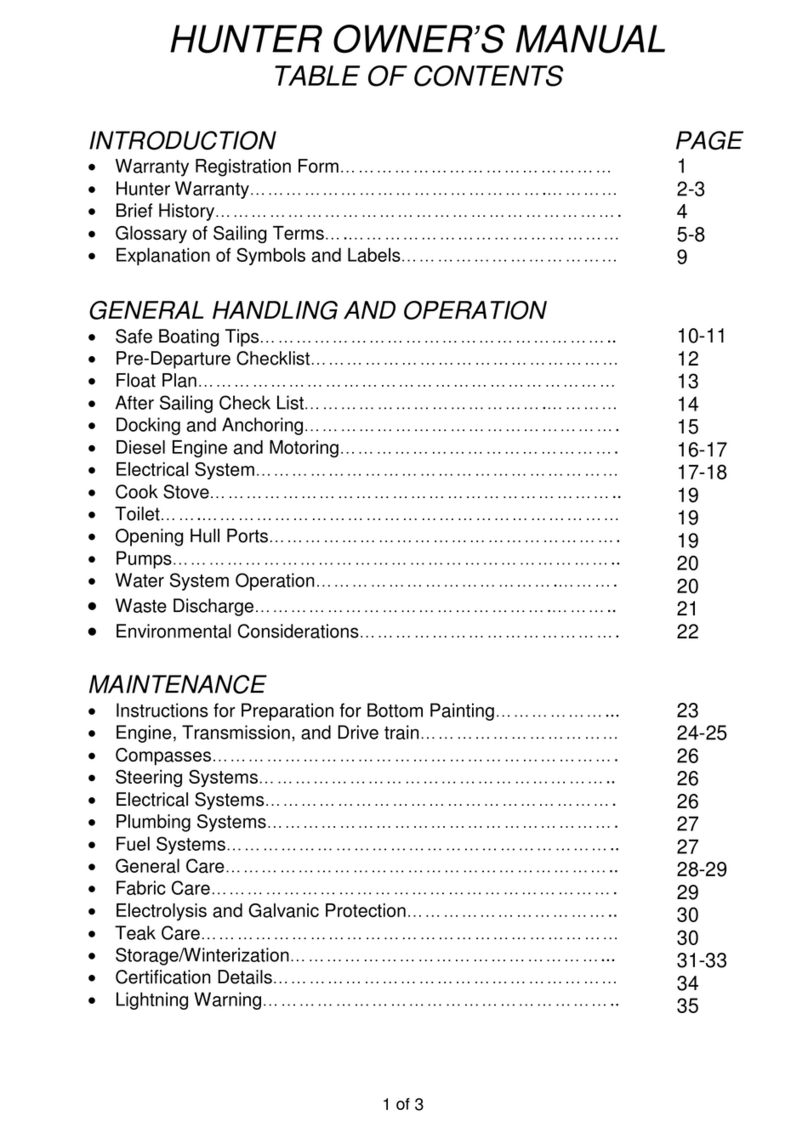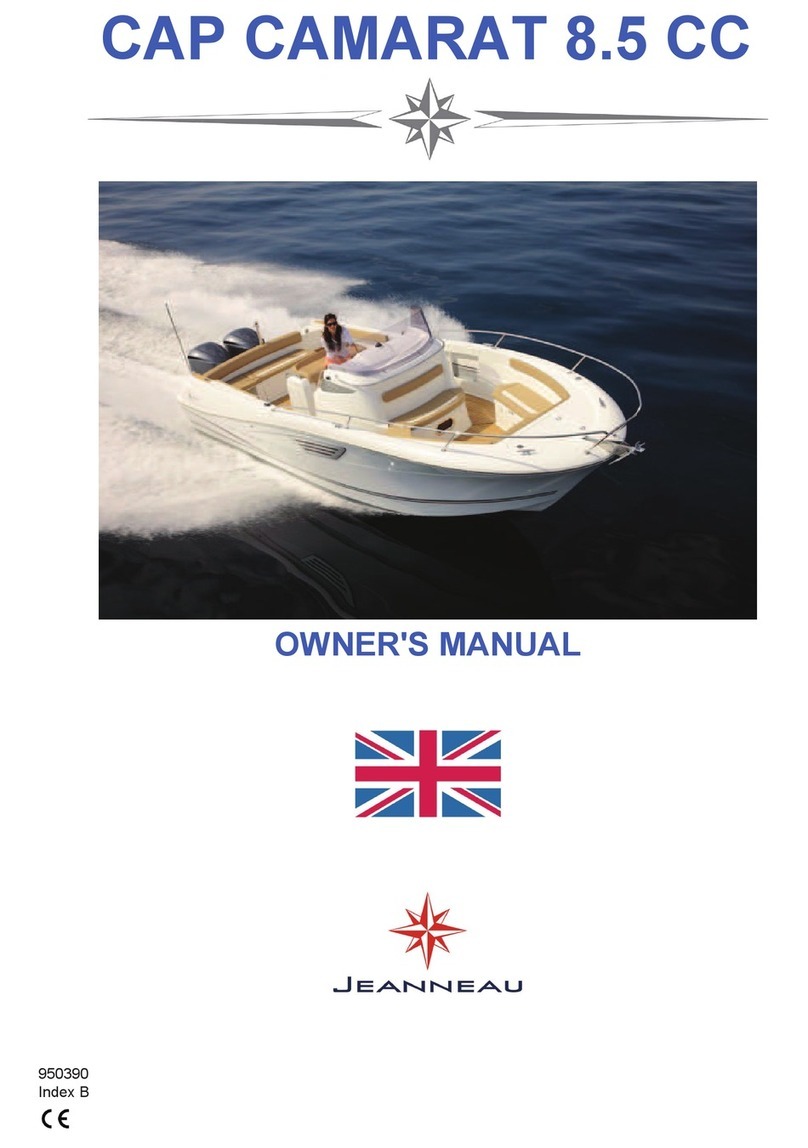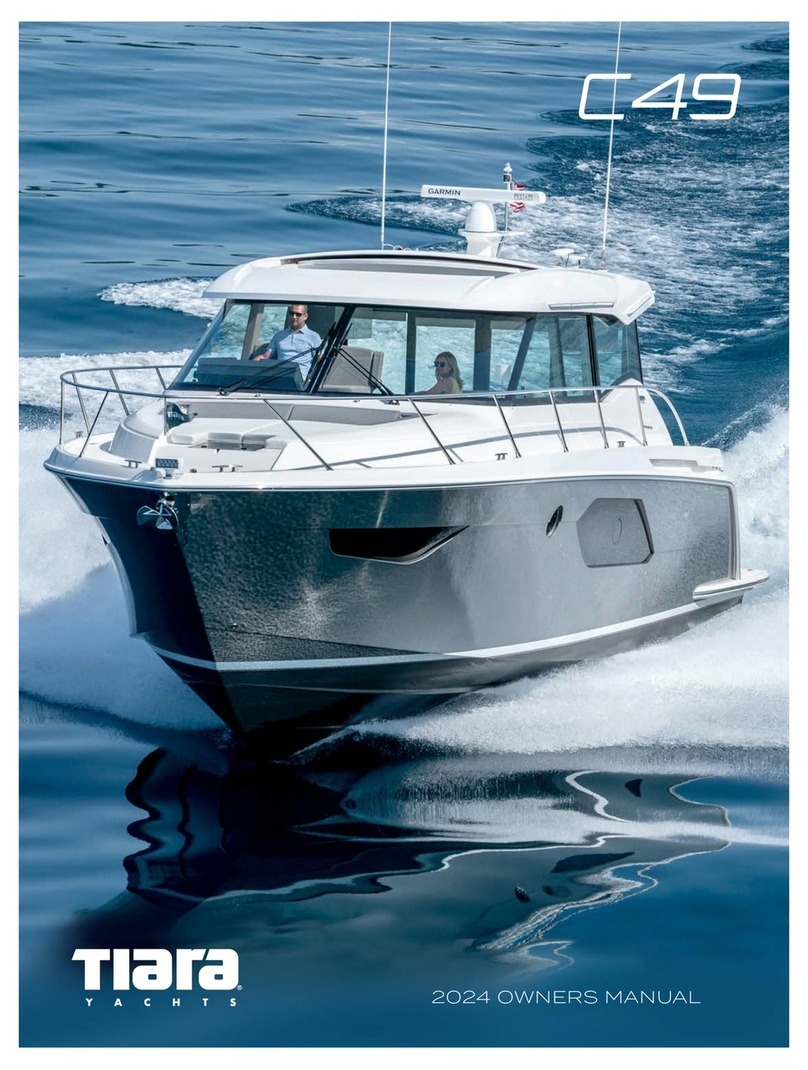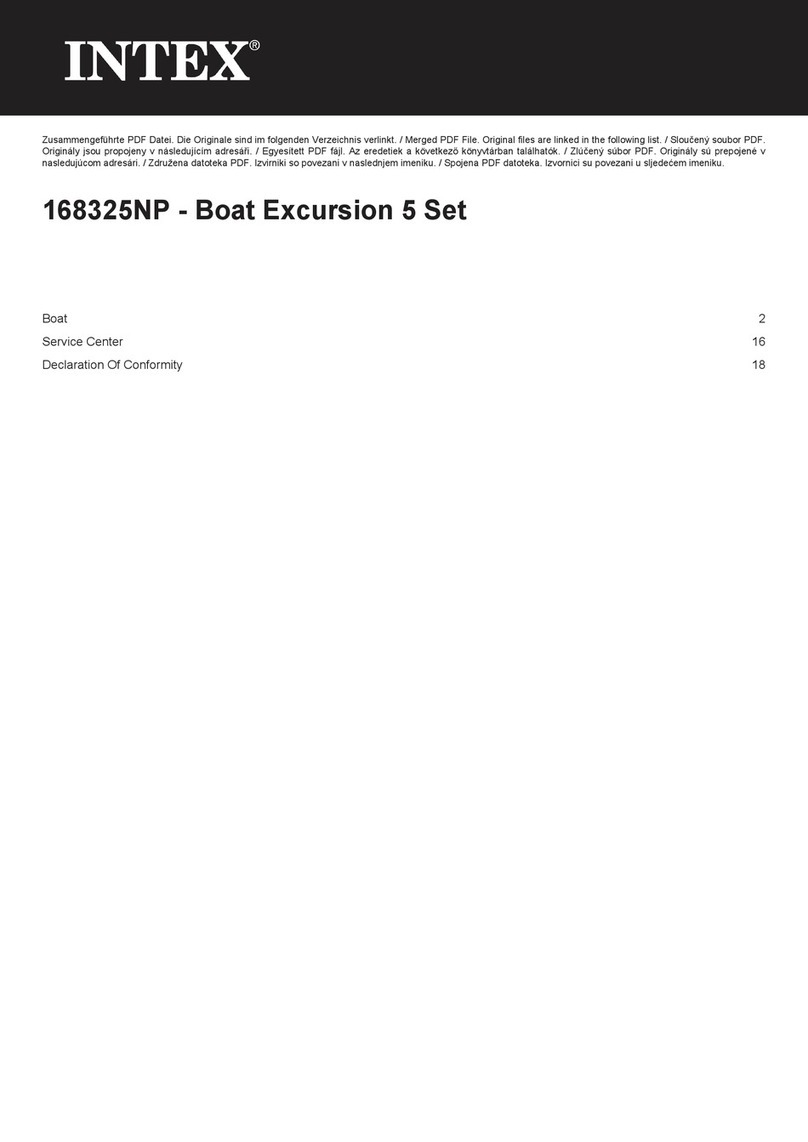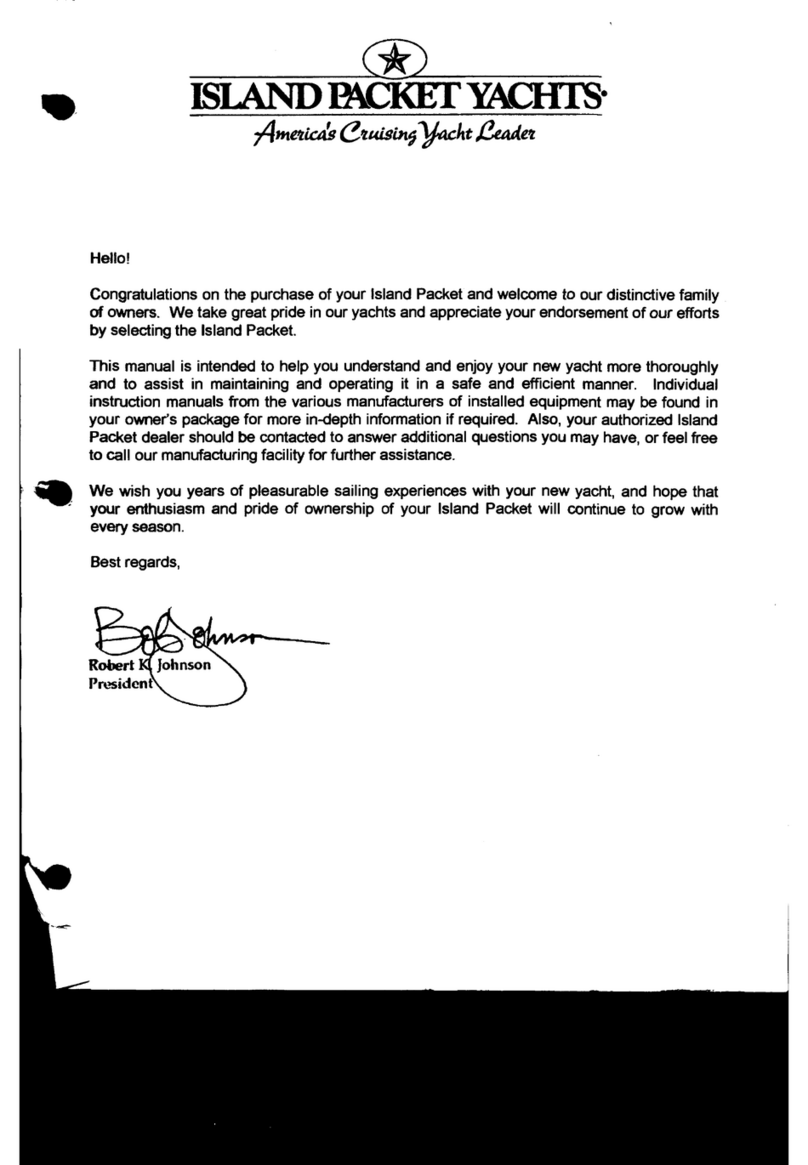
Hunter e36 • Introduction
1.2
1.1 The Manual Packet
This operator’s manual, along with your owner's packet,
has been compiled to help you to operate your boat with
safety and pleasure. The Owner's / Operator's Manual:
Describes basic safety information;
Describes some of the features of your boat;
Describes the equipment on your boat;
Contains fundamentals of the use of that equipment;
Contains fundamentals of the use of your boat.
However, please note that the information in this
manual only summarizes more detailed informa-
tion in the equipment manuals. The summaries are
intended to be a convenient reference for daily use.
OEM manuals take precedence over the infor-
mation in the manufactures documents.
This information does not give you a course in boating
safety, or how to navigate, anchor, or dock your boat.
Operating a boat, sail or power, requires more skills,
knowledge and awareness than is necessary to operate
a car or truck.
1.2 Your Responsibilities
Please keep this manual in a dry and secure but
readily accessible place and leave it on the boat
at all times! Make sure to hand over this manual
to the new owner if you decide to sell the boat.
If this is your first boat of this type or you are chang-
ing to a new boat you are not familiar with, please
insure that you obtain handling and operating expe-
rience before assuming command. For your safe-
ty, and the safety of your passengers you must:
Take a course in Boating Safety;
Get instruction, or aid in the safe and proper handling
of your boat;
Familiarize yourself and your passengers of the loca-
tions, and use of all safety, and essential operating
equipment.
•
•
•
•
•
•
•
•
Understand and follow the rules of the road;
Learn how to navigate a boat in all sea, and weather
conditions;
Register your boat, contact state boating authorities,
or the marine dealer for the registration requirements.
Boating Safety courses provide owners and operators
with the opportunity to gain knowledge and experience
in a variety of skills:
Navigation
Seamanship and boat handling
Rules of the Road
Knowledge of federal, state, and local regulations
Weather prediction
Safety at sea
Survival in bad weather
Respect for others on the water
First aid
Radio communication
Distress signals
Rendering assistance to others
Use of lifesaving equipment
Pollution control
Knowledge of the boat and its systems
Seaworthiness
Leaving or approaching a dock mooring
Anchoring and weighing anchor
Beaching the boat and shallow water operations
Towing and being towed
Handling mooring lines and tying up
Procedures for emergencies including fire, flooding,
collision, and medical emergencies, etc.
Even when your boat is categorized for them, the sea
and wind conditions corresponding to the design cat-
egories A, B, or C (see the design category example at
the end of this section.) can range from strong gale to
severe conditions where only a competent, fit and trained
crew handling a well maintained boat can safely operate.
We would like to hear your comments or suggestions
concerning our manuals. Did you find the information
helpful? Was the information delivered in a clear precise
manner? Was the information thorough enough to help
you with your new boat? Please call us at (904) 827-
2055 to speak to our Manual Department, if you have
questions, or comments, concerning the manual. Please
note, this department does not have design or warranty
information you will need to contact those departments
for such information.
•
•
•
•
•
•
•
•
•
•
•
•
•
•
•
•
•
•
•
•
•
•
•
•


